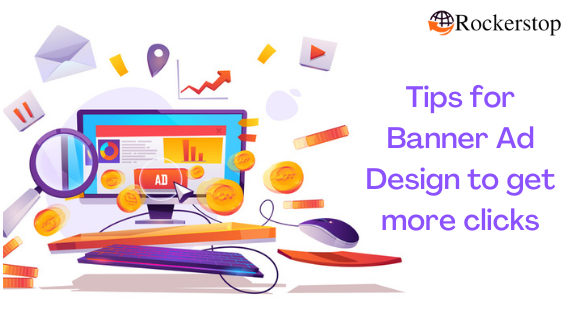Tips for Banner Ad Design
Web banner design is among the leading sorts of marketing utilized in today’s online world and comes altogether shapes and sizes. Web banner design is all about creating the elite clickable banner ads possible.
Banner ads are advertisement images puts on sites that showcase a product or brand and link to the advertiser’s website. Most of the companies use banner Ads in one form or another because they’re a reasonable, measurable and effective medium to extend brand awareness.
If you’re desiring to boost your online traffic with banner ads, you will be asking yourself: how am I creating web banner ad design that people will want to click on? Web banner design centralizes the organized creation of fruitful banner ads through the basic design guidelines. In this article we’ve put together all the knowledge you would like to make successful web banner designs.
10 Tips for Banner Ad Design
1. Banner Sizes
According to Google Adsense, standard banner sizes are:
728×90px — Leaderboard
300×600px — Half Page
300×250px — Medium Rectangle
336×280px — Large Rectangle
2. Simple is Good
Keep content and visuals simple. Viewers are probably only getting to glance at your web banner ad for a second.
3. Use Buttons Properly
Depending on the type of banner, buttons will frequently increase the click-through rate (CTR) of your ad. If you’re using them, place after your copy on the lower right side in contrasting colours. Always keep them steady throughout the set of ads.
4. Place your banner ads correctly
Buy space on an internet site where your design is going to be featured above the fold and shut to the most content of a page.
5. Readable Text
Make your headline and body copy different sizes. All copies should be four lines or less.
6. Use Relevant image
Select relevant graphics and photos that enhance your message and are straight related to your product. No abstract concepts here.
Can’t afford professional photography or supermodels? Buy an affordable license for a stock photo. There are many top-quality ones out there. Better still, choose original illustrations or graphics created by a designer.
Keep in mind, it’s not always necessary to take images in your banner ads. Nice typography can also create equally effective results.
7. Choose perfectly suitable colors
Each and every color features a different alliance, and it’s important to think about what type of emotions you would like to evoke in your audience. Colors are going to be the primary thing a user notices in your banner ad. Colors are also subjective and have different associations in several cultures. Make sure to review your audience when making your color selections.
8. Use the correct file formats
JPG, PNG, GIF or HTML5 files are going to be your working deliverables. Your designer will usually use Adobe Illustrator or Photoshop to give JPG, PNG, or GIF files, or in Google Web Designer or Adobe Animate for HTML5 files. Remember, Flash ads are just about out of date at now , so choose these other image file formats.
9. Maintain sequence
Banner ad design relies upon the proper balance within each ad, so watch your hierarchy. Effective banner ads are designed to extend brand awareness and drive traffic to your website.
Your company logo must be there to create brand awareness.
The value proposition showcases the service/product you provide and calls attention to itself with attractive offers and costs. Think words like: “High quality” or “50% off” or “Limited time offer.” this could take up the best space in your ad and will be the primary thing that viewers’ eyes see.
The call to action also called CTA is the text or button that invites users to click. Best examples of Phrases are “Know more” or ‘” Get started” or “Visit Now”. This should be a transparent focus of the ad.
10. Have a clearly defined frame
People’s eyes are usually drawn to a topic inside a frame. Productive banner ads definitely have a clearly defined frame with graphics extended to the sides of the box.
These are just a few banner ad design guidelines, but it takes tons more to make truly awesome, high-performing ads. If you’re not a knowledgeable designer (or too busy running a business), consider hiring a talented creative to style the right , clickable ads only for you.
